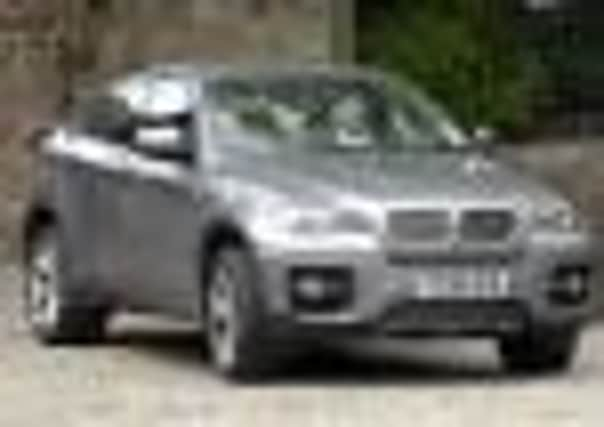Walking takes a back seat as car love affair refuses to die


Despite the best efforts of government ministers and environmental groups to coax people out from behind the wheel, cars are still increasingly Scotland’s favourite way to get about.
Driving a car, van or lorry was the main mode of transport for 42 per cent of Scots in 2009-10 – one percentage point more than the previous year and up from just 23 per cent in 1985-86.
Advertisement
Hide AdAdvertisement
Hide AdThose who travel mainly as passengers also increased, from 16 per cent to 21 per cent.
By contrast – perhaps in a further reflection of growing vehicle ownership – the proportion relying on walking has shrunk from 43 per cent to 23 per cent over the same period.
The stark changes set out in the National Transport Survey’s Scottish results – extracted by Transport Scotland – come against a background of virtually no movement among other types of transport.
Buses account for 9 per cent of trips compared with 11 per cent a quarter of a century ago, while trains, motorcycles and cycles are unchanged at 1 per cent each, and taxis/coaches/air/ferry combined at 2 per cent.
Motoring groups said the figures reflected major social changes since the 1980s.
Neil Greig, the Scotland-based policy and research director of the Institute of Advanced Motorists, said: “Once again, the car dominates, with almost as many people walking as travel as passengers in cars, vans and lorries, although the impact of high running costs is beginning to be felt, with a slight tailing off in car trips.
“Politicians must take note that motoring issues affect the vast majority of Scots, and addressing the state of the roads and the cost of fuel has the potential to improve the quality of life for many.
“The continued failure of rail and other public transport journeys to increase despite investing much more in them than roads must call into question their value for money and economic impact in this recession.”
Advertisement
Hide AdAdvertisement
Hide AdPhilip Gomm, a spokesman for the RAC Foundation, said: “The rise in car trips is mirrored by the increase in car ownership, particularly amongst the poor.
“The jump might also reflect changing lifestyles, as people have to make longer journeys to get to work, go shopping, visit relatives and so on.
“The big question is how things have changed over the past year and whether the record price of fuel has driven down car use.”
Campaigners for pedestrians agreed people had to travel further, but said walking rates were levelling out. Keith Irving, head of Living Streets Scotland, said: “Walking levels have declined, as the distance we have to travel to access jobs, goods and services has vastly increased since the 1980s.
“Nevertheless, this decline is stabilising and walking accounts for over three-quarters of journeys under a mile and nearly a quarter of all the journeys we take.
“The huge benefits of every-day walking – improving physical and mental health, supporting the local economy and promoting social inclusion – mean walking should receive greater recognition in how we design and maintain our streets and communities.”
The Scottish Government’s Transport Scotland agency said it continued to pump millions of pounds into encouraging “active” travel, such as walking and cycling.
A spokesman said: “The Scottish Government is committed to developing the sustainable transport agenda, promoting active travel and public transport alternatives to the private car, and promoting the health benefits that come from making everyday journeys by foot or by bike to make Scotland a healthier, fitter and more active nation.
Advertisement
Hide AdAdvertisement
Hide Ad“Since 2007, the Scottish Government has invested over £83 million in infrastructure and softer measures to encourage more active travel, including expansion of the National Cycle Network and local links to enable more people to travel by more active means for their everyday journeys.
“We recently announced a £2.2m funding package to help boost healthier, greener and more affordable travel across the country, including £1.3m to help increase Scottish cycling rates.
“And we have developed the Future Transport Fund, which will enable us to support better public transport, low-carbon vehicles and active travel initiatives.
“Our long-term commitment to active travel has been underlined with our recent announcement to provide more than £20m of capital funding for cycling and walking infrastructure over the next three years, in addition to the £15m earmarked for low carbon, sustainable and active travel initiatives.”